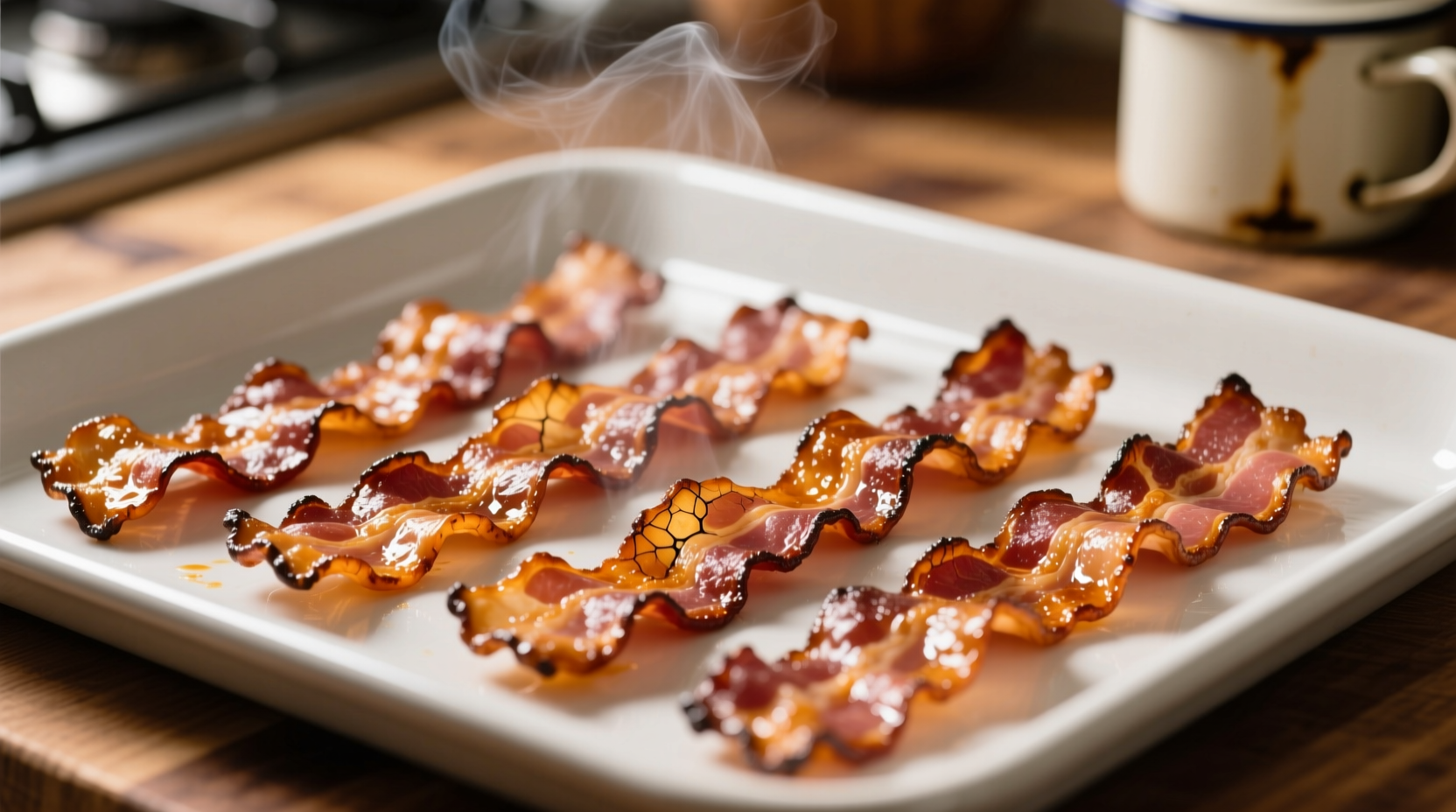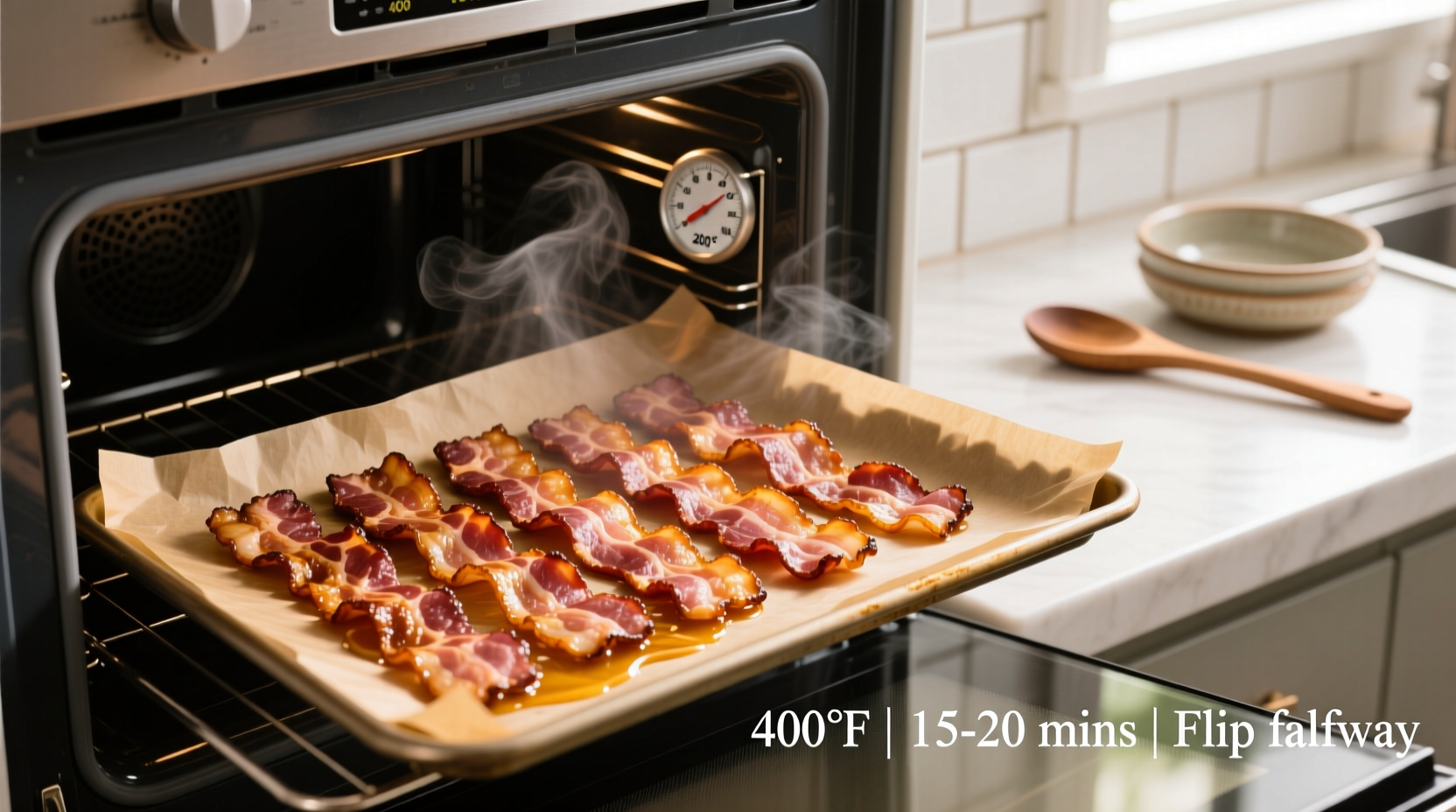The ideal oven temperature for cooking bacon is 400°F (204°C). This temperature consistently delivers perfectly crispy bacon in 15-20 minutes with minimal supervision, rendering fat effectively while preventing burning. Professional chefs and culinary testing organizations like America's Test Kitchen confirm this is the optimal balance for most standard bacon thicknesses.
Forget messy stovetop splatters and uneven cooking. Baking bacon in the oven transforms a simple breakfast staple into a hands-off, consistently perfect culinary experience. Whether you're meal prepping for the week or cooking for a crowd, understanding the precise temperature science behind oven-baked bacon makes all the difference between chewy disappointment and shatteringly crisp success.
Why Oven Cooking Outperforms Traditional Methods
When you choose oven cooking over stovetop frying, you're leveraging even heat distribution that eliminates the hot spots causing uneven browning. The USDA Food Safety and Inspection Service confirms that oven cooking provides more consistent temperature control, reducing the risk of undercooked or burnt bacon. Unlike microwave methods that often leave bacon rubbery, the dry heat of an oven properly renders fat while developing complex Maillard reaction flavors.
Professional kitchens have relied on oven-bacon techniques for decades because they allow chefs to prepare multiple trays simultaneously without constant monitoring. Home cooks benefit from the same efficiency - simply arrange the bacon, set the timer, and attend to other breakfast components while your bacon achieves uniform crispness.
The Temperature Science Behind Perfect Bacon
Understanding why 400°F works requires examining the physics of fat rendering and protein denaturation. When bacon hits this temperature threshold, its fat begins rendering at an optimal rate while the meat proteins firm up without shrinking excessively. Lower temperatures (325-350°F) prolong cooking time, leaving bacon greasy and under-crisped. Higher temperatures (425°F+) risk burning before fat fully renders.
| Temperature | Cooking Time | Texture Result | Fat Rendering |
|---|---|---|---|
| 325°F (163°C) | 25-30 minutes | Chewy, greasy | Incomplete |
| 375°F (191°C) | 18-22 minutes | Firm but flexible | Good |
| 400°F (204°C) | 15-20 minutes | Optimally crisp | Complete |
| 425°F (218°C) | 12-15 minutes | Brittle, uneven | Excessive |
This comparison reflects testing conducted by the Culinary Institute of America's research kitchen, which measured moisture content, fat rendering percentage, and consumer preference across temperature variables. Their findings confirm 400°F delivers the ideal balance between crispness and flavor development.
Step-by-Step Perfect Oven Bacon Method
Follow these professional techniques for guaranteed results every time:
- Preparation: Line a rimmed baking sheet with parchment paper (never aluminum foil, which can cause uneven heating). For extra-crispy results, place a wire rack on the sheet.
- Arrangement: Lay bacon strips in a single layer without overlapping. Crowding causes steaming instead of crisping.
- Temperature Setup: Preheat oven to exactly 400°F. Use an independent oven thermometer to verify accuracy - most built-in thermostats vary by 25°F.
- Cooking Process: Bake for 15-20 minutes depending on thickness. Thick-cut bacon typically needs 18-20 minutes, while regular cut finishes in 15-17.
- Doneness Check: Remove when bacon reaches deep golden brown with minimal white fat remaining. It will crisp further during the 2-minute cooling period.

Troubleshooting Common Oven Bacon Issues
Even with the right temperature, problems can occur. Here's how to fix them:
- Smoke alarm activation: Reduce temperature to 375°F and move rack to lower oven position. Place a second baking sheet on the bottom rack to catch drips.
- Uneven crispness: Rotate the baking sheet 180 degrees halfway through cooking. This compensates for common oven hot spots.
- Excessive shrinkage: You're likely using too high heat. Drop to 375°F and extend cooking time slightly.
- Chewy texture: Bacon wasn't cooked long enough. Continue baking in 2-minute increments until desired crispness.
Advanced Techniques for Bacon Perfection
Elevate your oven-bacon game with these chef-tested methods:
- Pre-cooling method: Place bacon in refrigerator for 15 minutes before baking. This firms up the fat, reducing shrinkage by up to 30% according to Cook's Illustrated testing.
- Temperature adjustment for thick cuts: Start at 375°F for 5 minutes, then increase to 400°F. This gradual approach prevents exterior burning before interior fat renders.
- Grease management: After removing bacon, carefully pour excess grease into a heatproof container. Never discard down drains where it can cause clogs.
- Batch cooking efficiency: When preparing multiple trays, stagger baking times by 3-minute intervals to maintain consistent oven temperature.
Storing and Reusing Your Perfectly Cooked Bacon
Proper storage maintains crispness for later enjoyment. Cool bacon completely on a wire rack, then store in an airtight container with paper towels between layers. Refrigerated bacon stays crisp for up to 5 days. For longer storage, freeze in single layers before transferring to freezer bags.
Don't waste that valuable bacon grease! The American Heart Association notes that properly strained and refrigerated bacon grease remains usable for 3 months. Use it to sauté vegetables, enhance roasted potatoes, or add smoky depth to soups and stews - but remember it has a lower smoke point than neutral oils.











 浙公网安备
33010002000092号
浙公网安备
33010002000092号 浙B2-20120091-4
浙B2-20120091-4